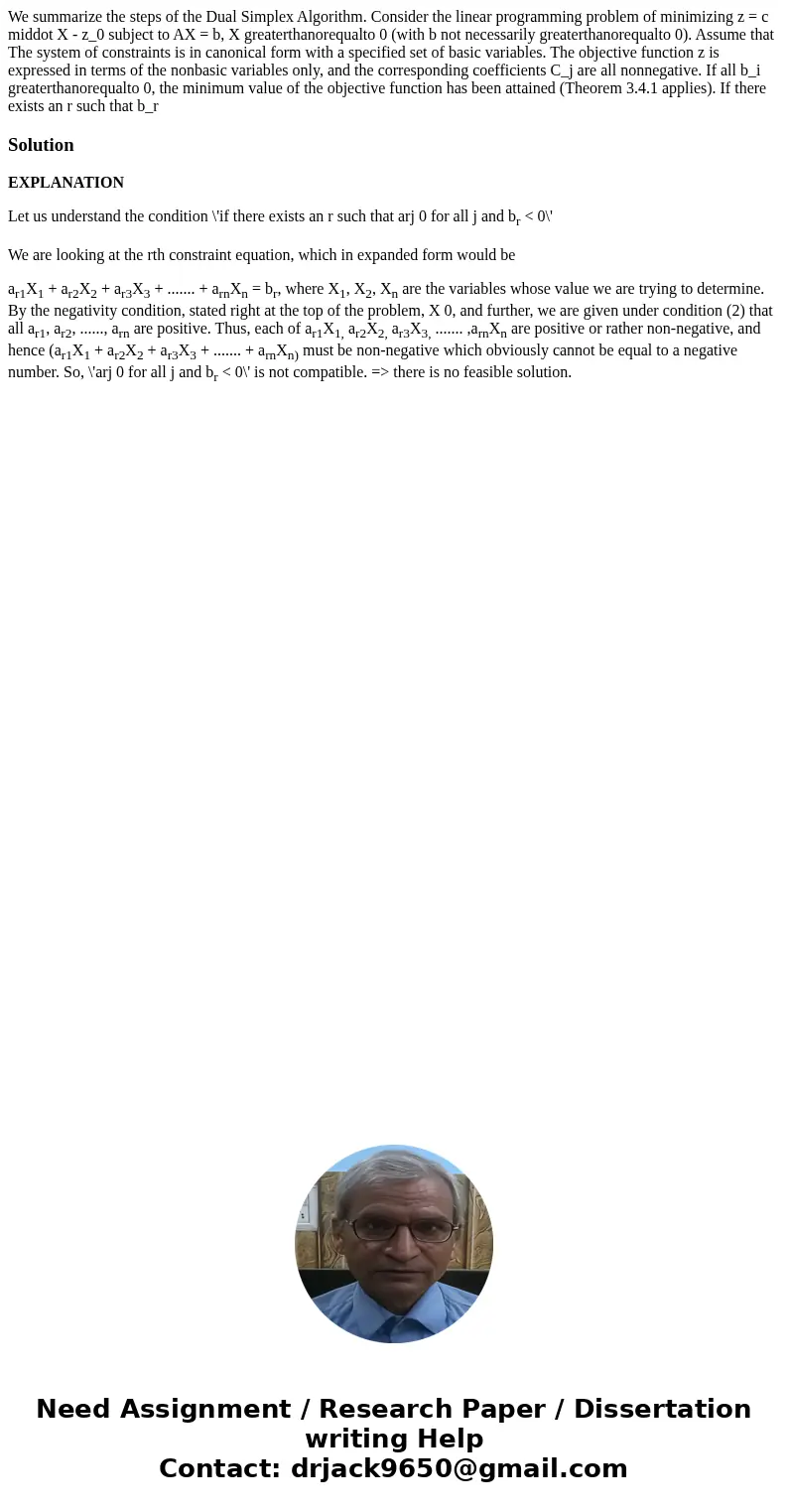We summarize the steps of the Dual Simplex Algorithm Conside
Solution
EXPLANATION
Let us understand the condition \'if there exists an r such that arj 0 for all j and br < 0\'
We are looking at the rth constraint equation, which in expanded form would be
ar1X1 + ar2X2 + ar3X3 + ....... + arnXn = br, where X1, X2, Xn are the variables whose value we are trying to determine. By the negativity condition, stated right at the top of the problem, X 0, and further, we are given under condition (2) that all ar1, ar2, ......, arn are positive. Thus, each of ar1X1, ar2X2, ar3X3, ....... ,arnXn are positive or rather non-negative, and hence (ar1X1 + ar2X2 + ar3X3 + ....... + arnXn) must be non-negative which obviously cannot be equal to a negative number. So, \'arj 0 for all j and br < 0\' is not compatible. => there is no feasible solution.

 Homework Sourse
Homework Sourse